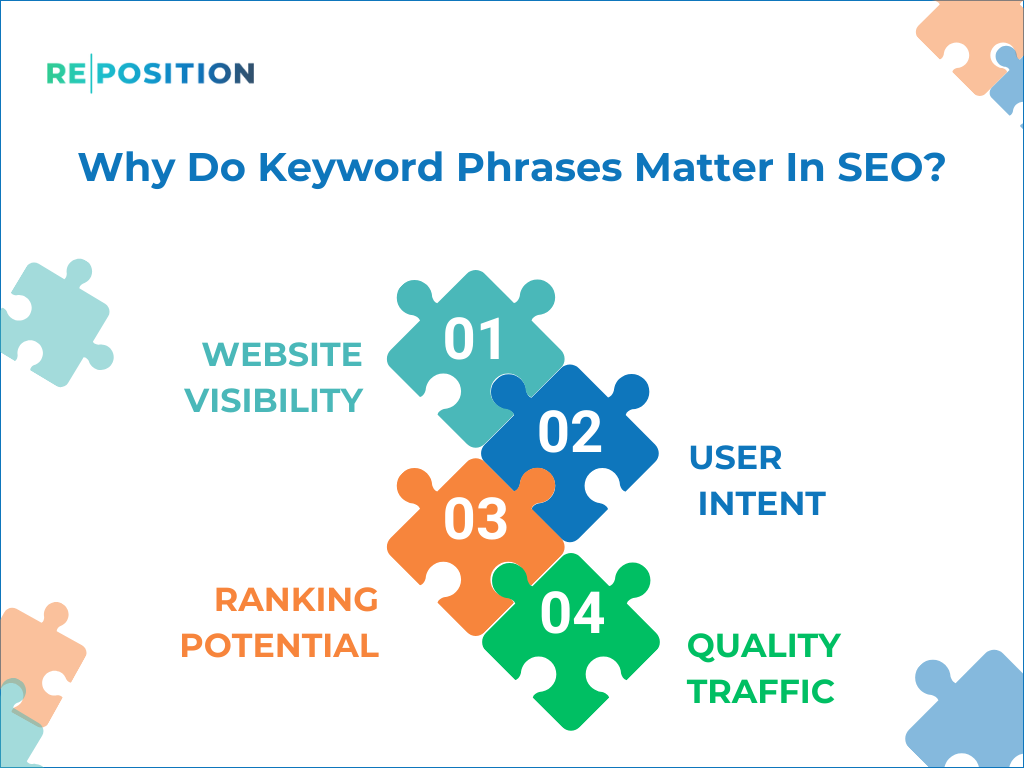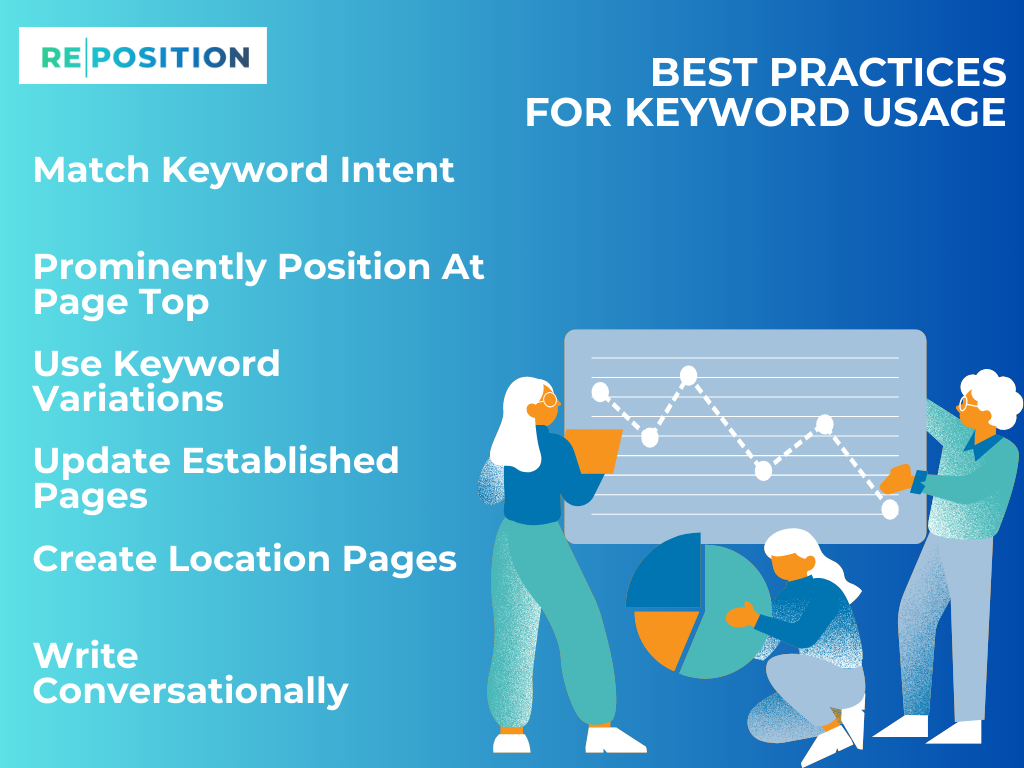In search engine optimization (SEO), the concept of “keywords” is paramount. Keywords are the words and phrases that internet users search for in search engines like Google when researching products, looking up information, or seeking solutions to problems. As an SEO best practice, optimizing website content for relevant keyword phrases leads to higher rankings and more qualified traffic.
But what exactly constitutes an effective keyword phrase? Why does keyword optimization matter in SEO? What goes into researching and integrating keywords properly? This comprehensive guide will explore what keyword phrases are, and their relevance to SEO, and provide actionable tips on leveraging keywords to improve search visibility.
Defining Keyword Phrases
To understand the value of keywords, we first need to define what constitutes a “keyword phrase”:
Keywords vs. Phrases
Keywords form the basic building blocks of search queries. However, the most effective semantics to target are multi-word keyword phrases, rather than just single keywords. For example:
- Keyword – “smartphone”
- Phrase – “latest smartphone deals”
Phrases contain multiple pertinent words that convey more context and user intent.
Generic vs. Long-Tail Keywords
Keywords and phrases can also be categorized based on specificity and search volume:
- Generic Keywords – More general, high-traffic terms like “web design Bangkok” and “digital marketing Thailand”. Highly competitive to rank for.
- Long-tail Keywords – Very specific, low volume, conversational phrases like “affordable small business web design promotions in Siam” or “how to improve online visibility through SEO practices as a Bangkok startup”. Easier to target.
Why Do Keyword Phrases Matter In SEO?

Now that we understand what constitutes a keyword phrase, let’s explore why keyword optimization is integral to SEO and driving qualified organic traffic:
Website Visibility
Matching website content to words users search aligns with search engines’ mission – connecting people’s information needs with the most relevant online destinations. Optimizing for keywords and answering user queries makes your site stand out.
User Intent
Every search contains underlying user intent and desired actions. Keyword phrases capture and convey user intent strongly. By mapping intended actions to tailored content, visitors are more likely to convert once on your pages.
Ranking Potential
Incorporating keywords naturally into copy help search bots understand page relevance for those phrases. This boosts rankings for said terms and phrases leading to higher visibility for similarly themed queries.
Quality Traffic
Well-optimized keyword-focused content attracts visitors more inclined to be part of your target customer base given their specified searches. This traffic drives greater engagement and conversions overall.
Proper keyword usage enables websites to meet both user search objectives as well as search engine relevancy requirements – the best of both worlds.
Step-By-Step Keyword Optimization Process
Now that the immense value of keyword usage for discoverability and traffic is clear, how should one go about researching, selecting and optimizing pages for target phrases?
Follow this step-by-step SEO keyword optimization process:
Step 1: Brainstorm A Wide Set Of Potential Keywords
Start by broadly thinking about words and phrases aligned to the topics your content covers. Leverage tools like Google Search, product categories, related sites and Ads campaigns to spur keyword ideas.
Also, consider questions customers ask to uncover “long-tail” informational keywords. Compile all keywords into a master list.
Step 2: Categorize Keywords By Theme
With a big list formed, now group keywords into themes and sub-themes. This organizes phrases into logical clusters for targeting specific pages. For example, an e-commerce site may have groups like:
- Product Names – “t-shirts”, “sofa sets”
- Product features – “latest fashion”, “minimalist furniture”
- Discounts – “end of season sale”, “festive offers”
- Brand names – “Nike”, “Ikea”
- Location references
Step 3: Analyze Keyword Search Volume
Assess monthly search volumes for each keyword phrase using Google’s Keyword Planner tool. This quantifies demand indicating how many searches a term gets.
Categorize your broad list into
- High-volume keywords – over 10,000 monthly searches
- Mid-volume keywords – 1,000 to 10,000 monthly searches
- Low-volume keywords – under 1,000 monthly searches
Step 4: Gauge Competitiveness
Third-party tools like SEMrush, Ahrefs and Moz’s Keyword Explorer help analyze how hard it is to rank for a given term based on factors like sites already ranking, authority of domains, engagement metrics etc. Use data to label keywords:
- High competition terms – very hard to rank for presently; avoid
- Med competition terms – somewhat hard but achievable targets
- Low competition terms – easiest to rank for with optimization
Step 5: Shortlist Target Keyword Phrases
Choose the final keyword phrases to optimize for based on:
- Search volume – the higher the better
- Competitiveness – target easier phrases
- Conversion potential – revenue opportunities
- Strategic priorities – targets set by business goals
Continue monitoring keywords over time as landscapes change.
Step 6: Optimize Pages for Target Phrases
With core phrases identified, optimize on-page elements like title tags, meta descriptions, content, headings, URLs, image names and links pointing to pages with selected terms. This ties keywords to pages thematically.
Aim for each page to deliberately target 1 primary and 2-3 secondary phrases. Avoid over-optimizing. Write for both users and search bots.
Step 7: Track Keyword Rankings
Use the search console to track individual page ranking for target terms in live searches. See if rankings fluctuate or improve over the months. Monitor user engagement metrics on landing pages.
Refine page optimization and content quality to boost rankings. Expand to more competitive terms once achieving convergent rankings for the original phrases targeted.
Best Practices For Keyword Usage

Beyond the structured optimization process, also implement these key best practices to further enhance keyword usage for SEO:
Match Keyword Intent
Target keywords align with on-page content focus. For example, informational words best suit blog articles, while transactional ones like “coupon” work for offers pages.
Prominently Position At Page Top
Place keywords in prominent positions like page titles, opening paragraphs and section headings viewed first in page scans.
Use Keyword Variations
Include semantic variations, synonyms, acronyms, singular vs. plural formats and spelling changes for core terms to cover all bases.
Update Established Pages
Continuously enrich existing content pages with new, relevant keyword phrases as part of refinement. Combine newly trending terms with older evergreen keywords.
Create Location Pages
For multi-region brands, create a physical location or geo-focused pages incorporating city/area names as keywords targeting citizens.
Write Conversationally
Use natural language, customer lexicon and question formats in content to match conversational voice queries containing multiple mid to long-tail keywords.
Making keywords intrinsic across all on-site and off-site efforts gives users and search engines exactly the vocabulary cues needed for discovery and engagement.
Common Keyword Optimization Mistakes To Avoid
Certain missteps in keyword integration into pages can get websites penalized by search engines or end up targeting the wrong searches altogether.
Here are key keyword optimization mistakes to avoid:
Over-Optimization
When pages obsessively repeat keywords aiming to game search algorithms rather than offer genuine help, search engines may detect manipulation attempts and blacklist pages. Keep usage natural.
Misaligned Keywords and Content
Using swimwear-related keywords on a page about financial consulting results in dissatisfied visitors from mismatches between search intent and page content. Maintain contextual relevance.
Grammatically Awkward Constructs
Forcing keyword placement creates unnatural verbiage disruptive of reader flow like “Shopping for latest smartphone deals in leading brands of mobile phones is easier with us.” Avoid such phrase stuffing.
Excessive Branded Term Usage
Overuse of company and product names is seen as boasting rather than informative content. Readers may find it self-promotional.
Low-Quality Thin Content
Pages with 200 words built hastily around keywords, provide no real value to enrich search engine results. Well-developed quality content is paramount.
By avoiding these common pitfalls, your keyword optimization process will stay protected from penalties while continuing to accelerate SEO through legitimate quality procedures.
Tools For Keyword Research
Successfully identifying and integrating worthwhile, high-value keyword phrases relies extensively on specialized SEO research tools. Here are the top software platforms for enterprise-grade keyword discovery and analytics:
Google Keyword Planner
Google Ads’ free keyword planning tool offers reliable search volume and competition data for phrases as well as related keyword ideas. Great starting point for analysis.
AHREFs
Ahrefs is a paid SEO platform that lets users research keywords and backlink profiles of sites. For keyword analysis, Ahrefs provides extremely detailed metrics like:
- Search volume and trends over time
- Click-through-rates on SERPs
- Keyword difficulty scores
- Top-performing content from ranking pages
- Questions and long-tail variations
Beyond volumes, Ahrefs also reveals valuable context around what content formats best target keywords – images, videos, lists etc.
The rich keyword exploration within Ahrefs highlights precise terms aligned to business offerings that customers search for. Users can also track ranking progress for target keywords once optimized and marketed to benchmark success over the months.
Advanced filters allow exporting keywords for specific locations, devices, categories and more for very customized research. The platform integrates well with Google Analytics as well.
Given its sophisticated yet user-friendly capabilities, Ahrefs has emerged as one of the most popular paid tools for uncovering high-potential keywords that hit the sweet spot between intent, volume and difficulty.
SEMRUSH
Like Ahrefs, SEMrush is an enterprise-scale paid keyword analytics and SEO platform. Key features which make it invaluable for keyword research include:
- Location and language-based keyword data
- Keyword magic tool for accelerated brainstorming
- Questions and auto-complete keyword ideas
- Mobile vs. desktop splits
- Exact monthly volumes and trends
- Keyword gaps revealing untargeted opportunities
- Click-through-rate for phrases
- Serp analysis by position
SEMRUSH essentially takes keyword research to the next level with unique comparative metrics, multilingual/regional support and the ability to generate thousands of relevant semantic keyword suggestions. The tool also lets you group keywords as per topics and subtopics for easy targeting by pages.
Advanced filters and custom reporting provide exhaustive segmentation while projects help manage research for multiple sites and clients. The platform is bursting with keyword opportunities waiting to be leveraged for magnifying website visibility.
Once relevant keyword phrases have been identified, businesses can incorporate them strategically into website content, including page titles, headings, meta descriptions, and body copy, to improve visibility and relevance in search results.
Conclusion
In conclusion, keyword phrases are vital to effective SEO strategies, helping businesses improve their visibility in search results, attract targeted traffic, and increase conversions. By targeting specific keyword phrases that align with the needs and preferences of their target audience, businesses can enhance the relevance and authority of their website, ultimately leading to higher rankings and sustained success in the competitive online landscape. Incorporating keyword phrases strategically into website content and continually refining and updating keyword targeting efforts can help businesses stay ahead of the curve and achieve their SEO goals in the long term.

 SEO Services
SEO Services  Request a Quote
Request a Quote
 London
London
